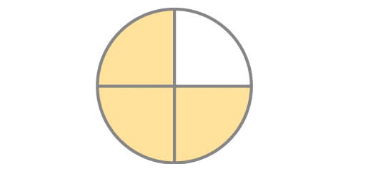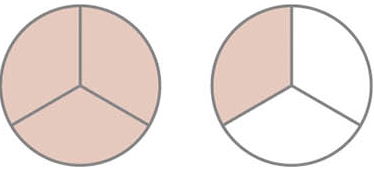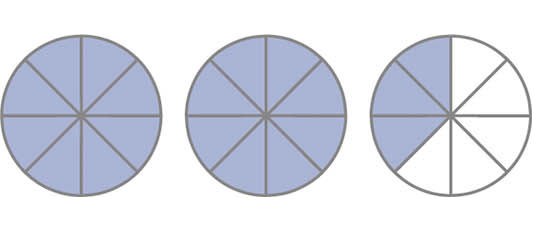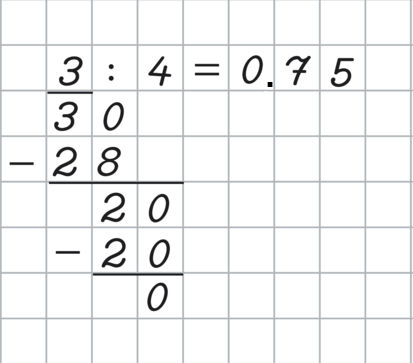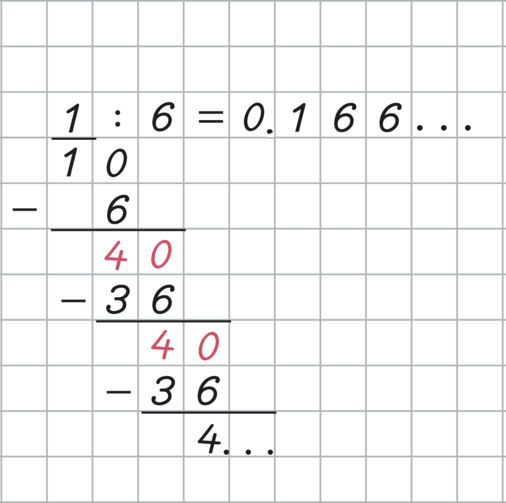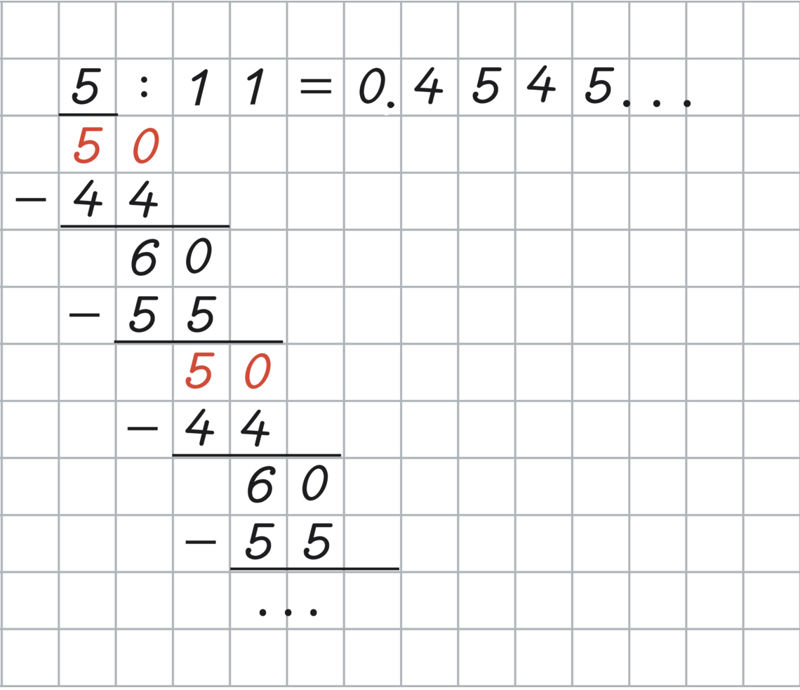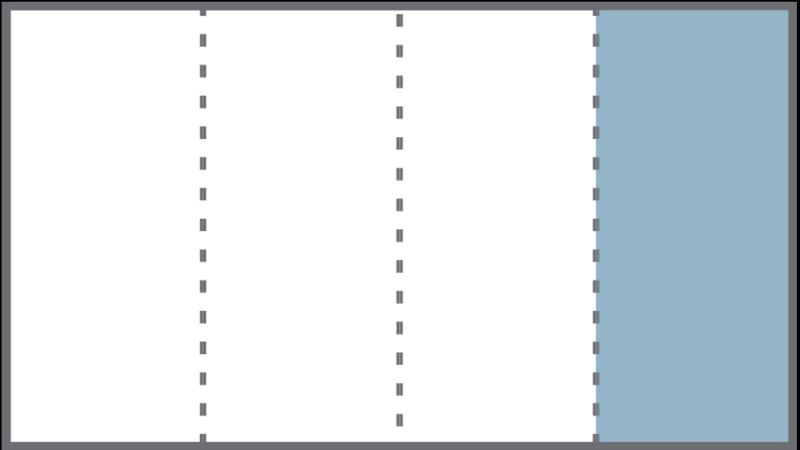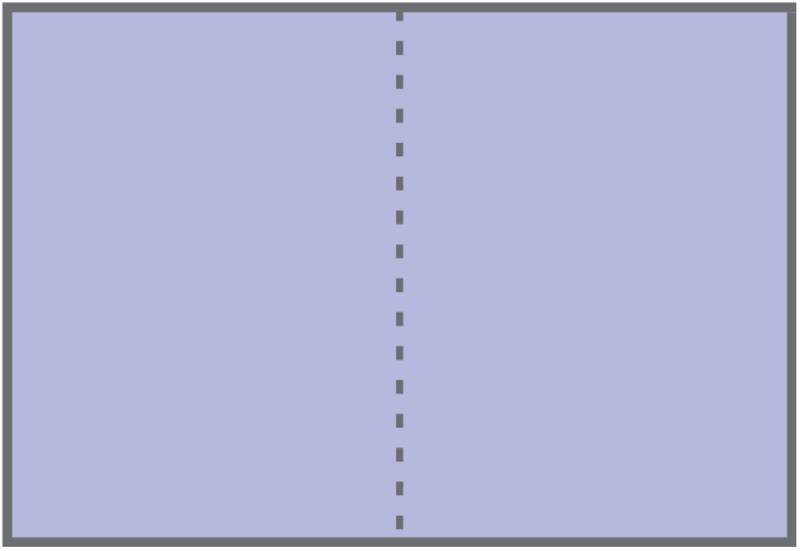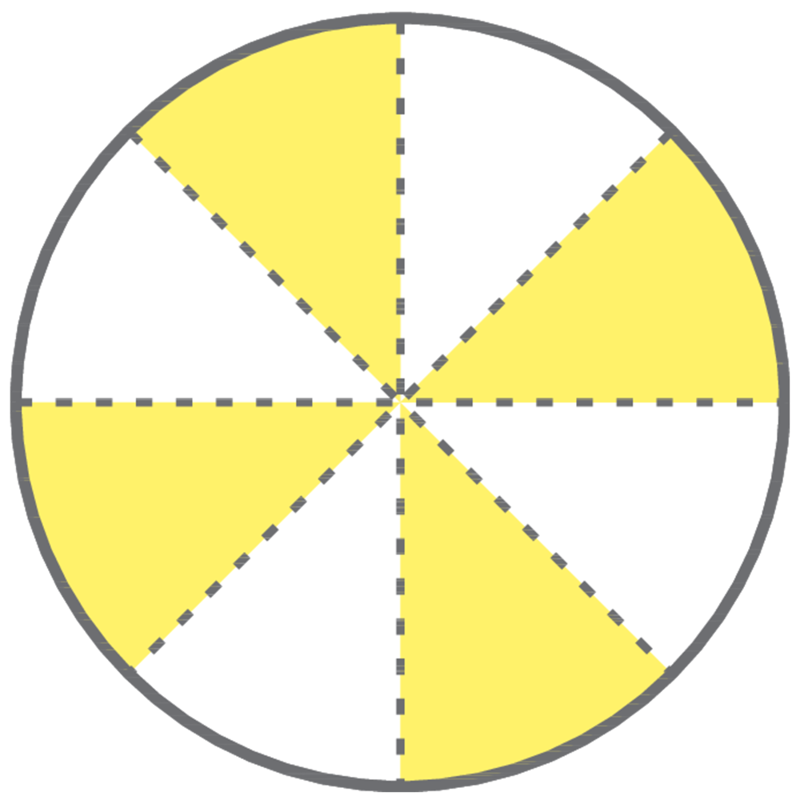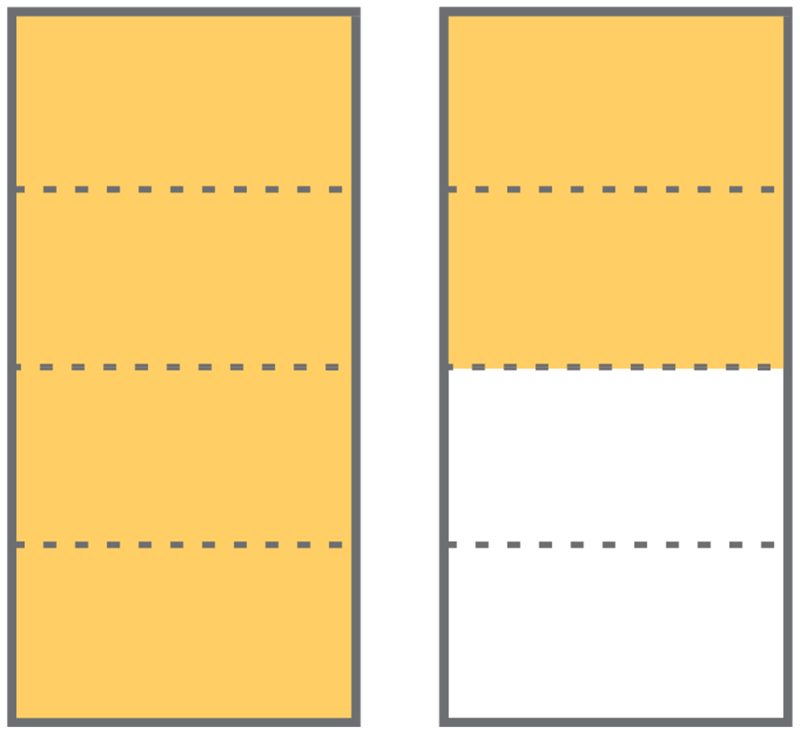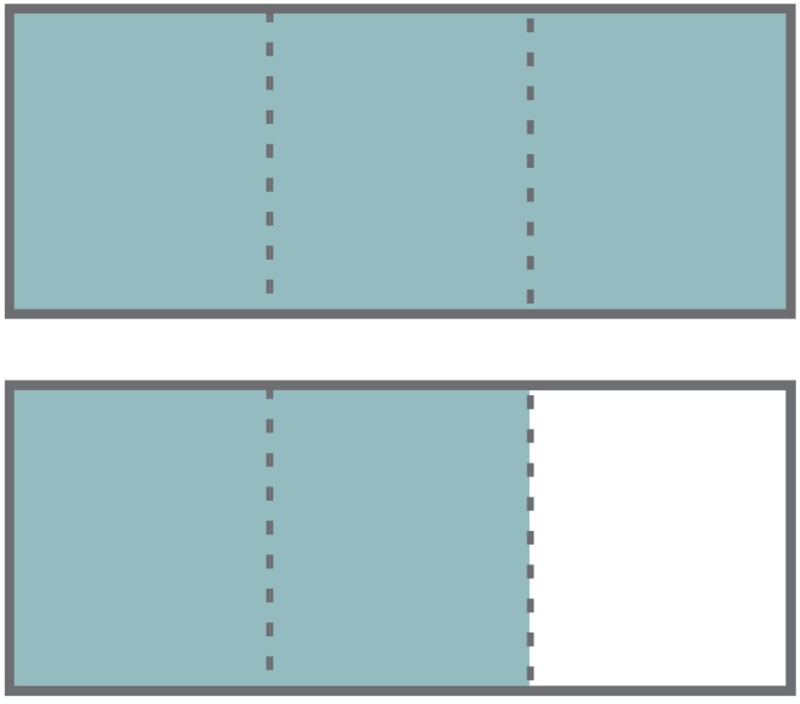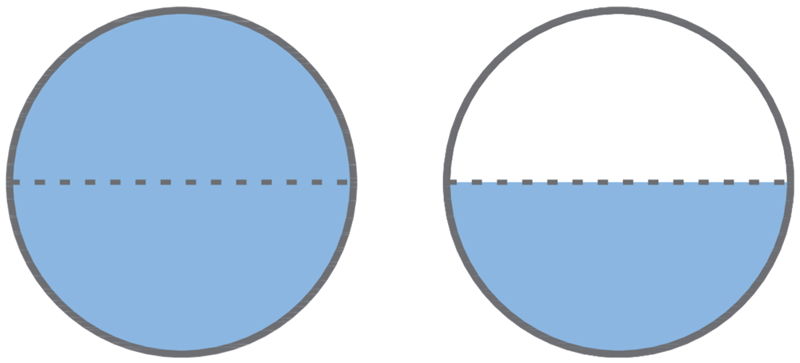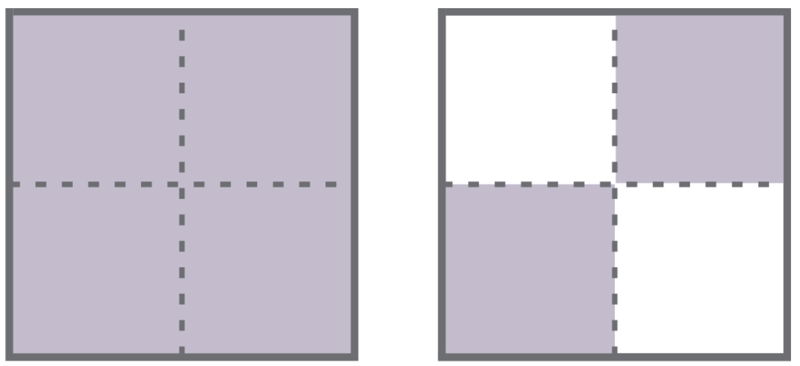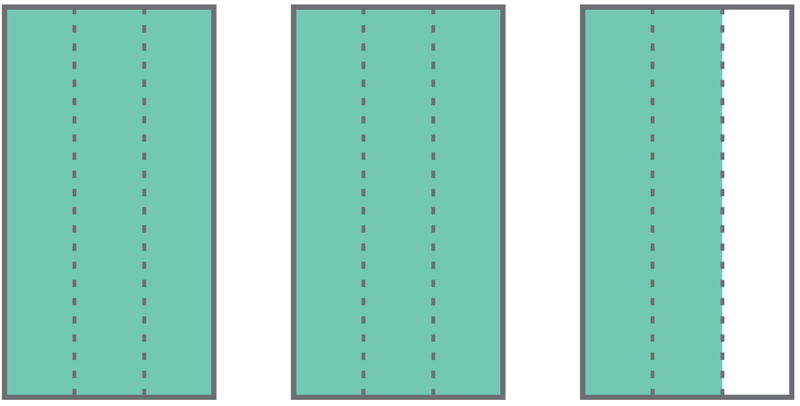- Fractions
- Decimals
- Converting a fraction to a decimal
- Converting a decimal to a fraction
- Infinite decimal numbers
Review what you already know
Fraction
Decimal number
A decimal number consists of an integer, a comma and the following decimal places.
Examples
- 1.24[annotation: One whole and twenty-four hundredths. ]
- 67.912[annotation: Sixty-seven wholes, nine hundred and twelve thousandths. ]
- 3000.5[annotation: Three thousand wholes and five tenths. ]
Finite decimal number
If the fraction can be expanded so that the denominator is
10, 100, 1 000, 10 000 etc,
then the decimal number is a finite decimal number.
Example 1
Infinite decimal number
- If the numerator of a fraction is divided by the denominator, and the same number starts repeating, it is an infinite decimal number.
- Such a repetition of a number or series of numbers is called a period.
Example
3.123123...
Period: 123
Infinite decimal numbers are indicated by three dots at the end of the decimal part.
Example 2
Converting a decimal to a fraction
Any decimal number can be converted to a fraction, except for non-terminating non-sequential decimals (e.g. π).
Example 3
Let's convert the decimal numbers to fractions.
Good to know
Tangram
The picture shows a tangram consisting of seven patterns: five triangles and two squares.
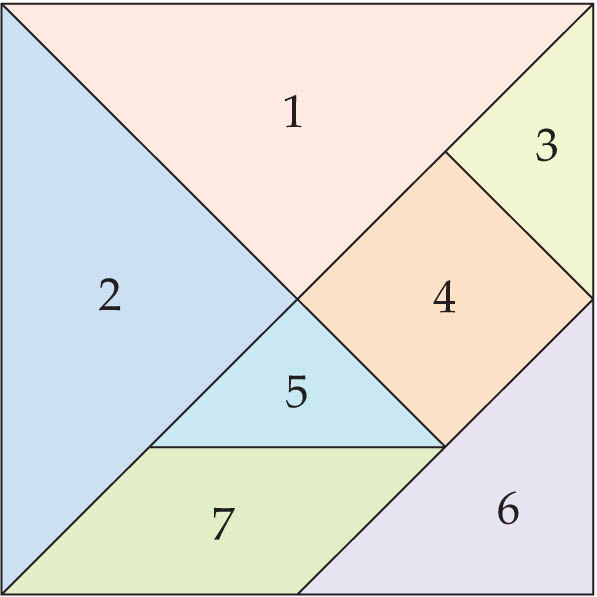
Read and think
Extra
Example
Denominator: or
Fraction | Denominator |
